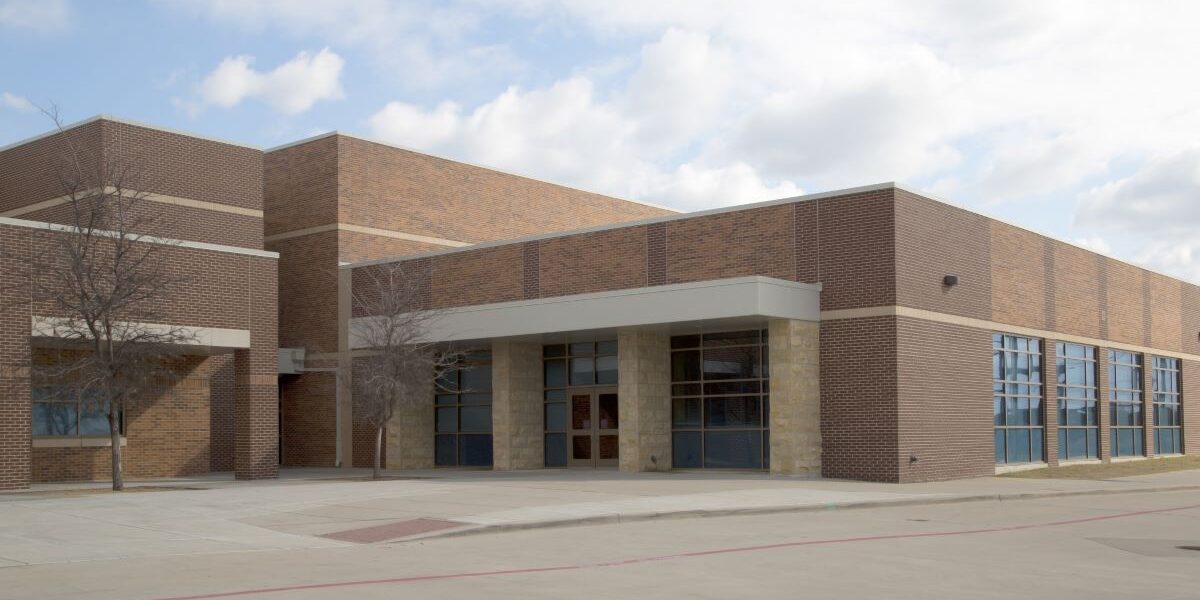To mitigate attacks that start outside buildings, schools are fortifying classrooms and entryways by adding bulletproof windows and ballistic-rated glass doors to protect students and staff.
How effective is bulletproof glass for schools, and does it make sense to implement, given your school’s security budget?
What Are Bulletproof Windows?
Bulletproof windows, also known as ballistic windows, are specialized security windows designed to provide protection against ballistic threats like bullets, shrapnel, or other projectiles. Bulletproof windows are commonly used in high-security environments, including military installations, government buildings, banks, armored vehicles, and VIP residences.
The construction of ballistic windows involves the use of multiple layers of specialized materials, such as laminated glass, polycarbonate, and other transparent synthetic materials. These layers are combined to create a composite structure that can withstand the impact of high-velocity projectiles.
The primary goal of ballistic windows is to provide transparent protection. This is a really important factor because a cheaper alternative to prevent someone from shooting into a school would be to pour concrete to fill every window.
But concrete isn’t a viable solution because a windowless school would resemble a prison, and studies have shown that being able to see outside increases learning, productivity, and creativity.
Are Bulletproof Windows Breakable?
It is important to note that while ballistic windows offer significant protection against ballistic threats, they are not invulnerable. Extremely high-powered weapons or specialized ammunition can breach even the strongest ballistic windows.
Luckily, the rounds most commonly used during school shootings can be stopped by most ballistic glass. Additionally, even if bullets penetrate the fortified glass layers, a shooter will still not be able to crawl through the window (like what happened in the Nashville school shooting) or reach through to open the door from the inside (like in the Central Visual Performing Arts School attack).
Should All School Windows Be Upgraded with Bulletproof Glass?
Back in the 1990s, after a commercial airline crash, comedian George Carlin wryly questioned, “If the black box flight recorder is never damaged during a plane crash, why isn’t the whole airplane made out of that stuff?” Of course, what seems like a clever idea isn’t practical because an indestructible plane would be too heavy to fly.
Applying the same principle to school security, ballistic-rated glass is about 10 times the weight of a standard window. Most structures are not designed to hold significantly more weight than their original architectural plans.
Retrofitting every school in the country with ballistic windows would exceed $2.6 trillion dollars —roughly 3 times the entire DOD annual budget—not including the cost of retrofitting structures for the extra weight.
How Much Do Bulletproof Windows and Doors Cost?
Glass that can stop multiple rounds from a high-power rifle costs roughly $500/sq. ft. The glass alone for a 100-classroom school building with entry and hallway windows can easily exceed $20 million—just for the glass.
Structural renovation to hold the weight of the ballistic glass can double this cost in a heartbeat. Installing ballistic glass is not a casual undertaking. Glass that can stop multiple .223 rounds weighs 8 pounds per sq. ft., which is about 10 times the weight of standard windows.
They aren’t a one-time purchase either. Ballistic glass requires regular inspection, maintenance, and adherence to proper installation guidelines to ensure continued effectiveness. Due to the inherent UV exposure that ballistic glass gets, they need to be replaced about every 20 years because the sun breaks down the protective layers.
What Does the Process of Installing Ballistic Glass Look Like?
When most school shooters are current or former students who have awareness of the active shooter plan and fortification systems, a school system can’t get away with selectively upgrading the windows, because an insider will know to target the weakest points.
If a school only fortifies windows and doors on the first floor, a planned attack might start by climbing onto the roof. Time and time again, determined school shooters have studied prior attacks and figured out ways to bypass security at schools.
For these building fortifications to be successful at preventing school shootings, there needs to be an in-depth analysis of every possible attack scenario combined with real-time situational awareness to ensure that fortified areas are locked and secured before an attacker enters the school.
Pros of Bulletproof Security Windows
Increased Safety: Although not impenetrable, ballistic glass windows can provide added protection against gunfire. This extra layer of protection can be a matter of life and death.
Can Improve Response: If a school shooting happens, bulletproof glass can give students and teachers extra minutes or seconds to get away from the threat.
Peace of Mind: Simply knowing that classrooms are equipped with an extra layer of protection can bring peace of mind to parents, teachers, and students.
Cons of Bulletproof Security Windows
Expensive to Implement: Retrofitting existing classroom, hallway, and common area windows can be a huge financial burden for schools—particularly those with tight security budgets.
Safety Concerns: Should a door lock jam or malfunction in the event of a fire or other emergency, bulletproof glass can prevent students and staff from evacuating quickly.
Not 100% Bulletproof: Despite the name, bulletproof glass is not 100% foolproof. It can still be penetrated depending on weapon type and force applied. Additionally, it only provides protection if you are locked in a confined space equipped with bulletproof glass—not when people are walking through hallways or outside of classroom walls.
Dustin Brooks is the chief customer officer and co-founder of ZeroEyes, which delivers a proactive, human-verified visual gun detection and situational awareness solution that integrates into existing digital security cameras to stop mass shootings and gun-related violence, www.zeroeyes.com.










